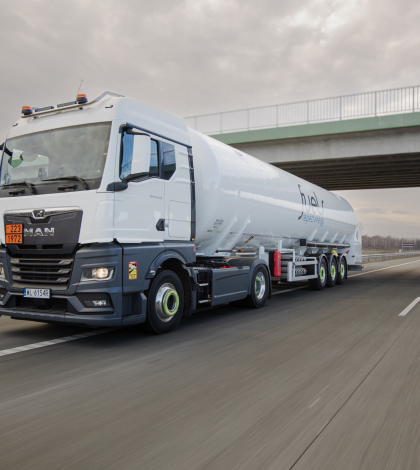Use of LNG in industry

Liquefied gas (LNG) is a versatile source of energy, the use of which covers various industries, from the food industry, through galvanizing plants, to steelworks. Wherever supplies of thermal energy (for technological purposes, steam production, water heating) or electricity are required, LNG is an effective alternative.
to power technological processes (heat and electricity / cogeneration)
cooling;
fuel for transport;
fuel for energy purposes;
power reserve;
raw material for production;
In the context of the food industry, LNG can be used to generate process heat necessary for cleaning production lines, degreasing and thermal processing of food, such as steaming, cooking, baking or smoking. Liquefied natural gas is also becoming a convenient source of energy for plants where melting (e.g. glass), firing (e.g. ceramics) or clamping/welding (e.g. filter tapes) processes take place.
It should be emphasized that LNG is a particularly beneficial solution in regions where dynamic industrial development conflicts with energy deficits or air pollution problems. Additionally, high-efficiency cogeneration, i.e. the simultaneous production of heat and electricity, brings significant benefits both for the environment and for entrepreneurs’ wallets.
It is also worth noting that enterprises using this technology can benefit from public subsidy programs, such as the cogeneration bonus and guaranteed cogeneration bonus. These financial resources provide an additional incentive for companies, while supporting the development of sustainable and energy-efficient production.
LNG in refrigeration
Liquefied natural gas (LNG) is effectively used in the field of refrigeration, especially in the production of frozen foods and for products requiring low temperatures, such as fish processing. Interestingly, LNG can function not only as a fuel for generating electricity for traditional compressor refrigeration units.
Natural gas in liquefied state is stored at -163ºC. Before combustion, it is necessary to regasify it, and during this process it is possible to recover the energy previously used to cool the gas. In this context, the evaporator in which LNG changes from the liquid to the gaseous phase is equipped with a special heat exchanger. This element not only enables the regasification of LNG, but also lowers the temperature of the refrigerant, for example glycol, which is then used in production processes. This use of LNG contributes to a significant reduction in the consumption of electricity needed to power refrigeration units.
This innovative way of using LNG not only contributes to effective energy recovery, but also enables the reduction of electricity consumption in traditional cooling systems. This sustainable practice is an important step towards a more efficient and ecological use of energy resources, especially in the context of refrigeration production.
LNG in transport
LNG has successfully proven its usefulness in the transport sector, not only being a source of propulsion for road vehicles and ships, which are necessary to ensure continuity of supplies in various industries, but also providing fuel for highly fuel-hungry machines, such as shipyard tugboats and huge mining vehicles.
In the case of land transport, LNG is used to power wheeled vehicles, which helps reduce atmospheric pollutant emissions and promotes more sustainable forms of mobility. In maritime transport, LNG is becoming a popular fuel for ships, offering lower sulfur dioxide and dust emissions, which contributes to meeting strict emission standards on seas and oceans.
Additionally, liquefied natural gas is used to fuel energy-intensive machinery such as shipyard tugboats, which are crucial to port operations, and powerful mining vehicles used in difficult off-road conditions. This diversity of LNG applications in transport is an important step towards more ecological and effective solutions, contributing to the reduction of harmful emissions in various transport sectors.
Gas energy
In Japan and Korea, LNG plays a key role as a power source for power plants and gas-fired heat and power plants. A perfect example is the Futtsu power plant with an impressive capacity of 5,040 MW, located in Yokohama. The use of natural gas in the energy sector is associated with high efficiency of combined systems, which consist of gas and steam turbines. This advanced technology contributes to achieving significant energy efficiency of this fuel.
An extremely important aspect is also the environmental benefit resulting from the use of natural gas in power plants and combined heat and power plants. Gas-powered infrastructures emit up to half as much harmful substances as their coal-based counterparts. Compared to nuclear energy or hydroelectric power plants, LNG-based power plants are both more economical and easier to implement.
High efficiency, energy efficiency and ecological benefits make the use of LNG in the energy industry not only an attractive but also a sustainable solution. Therefore, interest is directed towards this type of technology, especially in countries such as Japan and Korea, which are aware of the significant benefits of using liquefied natural gas.
Other uses
LNG is used in technologically advanced processes and devices around the world, such as high-performance magnetogasdynamic generators. These advanced devices operate at high temperatures, enabling the direct conversion of the chemical energy of the gas into electrical energy. This technology allows to achieve exceptionally high energy efficiency using LNG, which is used to cool magnets, important elements of these generators.
Additionally, liquefied natural gas is used in low-temperature hydrocarbon gas fractionation infrastructures in the refining and petrochemical industry. An example is the low-temperature infrastructure in Fos-sur-Mer in France, where LNG is necessary to produce oxygen by rectifying liquefied air.
The future of the use of LNG in industry seems promising, and its growing availability, relatively low emission and competitive price suggest that it will become more and more popular. Statistics confirm this trend, with over 80% growth in LNG exports over the last 10 years. Forecasts indicate that this development will continue and the share of LNG on the market will reach 40%. It is expected that by 2040, as much as 60% of gas trade will take place in the LNG chain, which proves the growing importance of this fuel in the global energy landscape.
Related Posts

How to estimate the benefits of using natural gas
Before making a decision, it is worth carefully assessing the potential benefits of this type of fuel. Specialist consultancy companies such as Respect Energy Fuels can assist with this process.

How does an LNG installation work?
Due to the dynamic increase in interest of LNG, development and innovation in the field of LNG infrastructures are becoming crucial. Companies active in this industry, trying to meet the growing demand, are investIng in modern technologies and sustainable solutions. There they contribute to the further development of this sector in the global arena.


